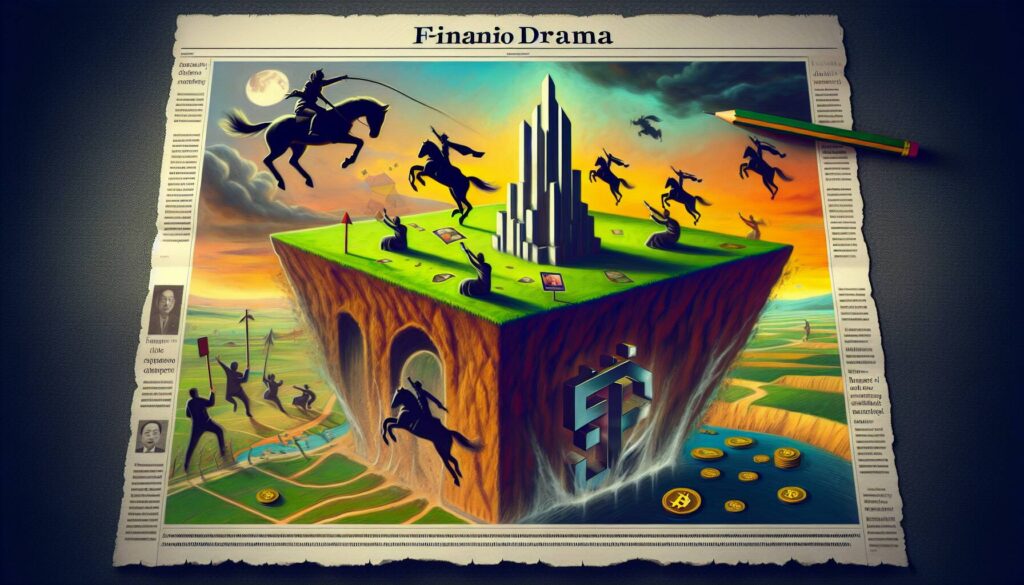In a notable development in the cryptocurrency sector, Bloomberg analyst Eric Balchunas has highlighted that several exchanges have released listing notices for two significant exchange-traded funds (ETFs): Bitwise’s Solana ETF and Canary’s Litecoin and Hedera funds. This news underscores a growing interest in digital assets as more investment vehicles become available to the public.
Balchunas’ insights suggest that the cryptocurrency market is entering a new phase, characterized by the increasing acceptance and incorporation of cryptocurrencies into mainstream investment strategies. The listing of these ETFs signals a belief among market players in the long-term potential of the underlying blockchain technologies represented by Solana, Litecoin, and Hedera.
The introduction of ETFs linked to established cryptocurrencies provides both institutional and retail investors with a more traditional avenue to access the digital asset market, potentially leading to increased volume and liquidity.
Amidst the ongoing evolution of financial instruments in the crypto space, this move may also reflect broader trends in regulatory acceptance, as exchanges navigate the complexities of compliance while striving to meet the demands of a rapidly growing investor base. As this market continues to innovate, the implications for both investors and the future of cryptocurrency remain considerable.
Impact of Upcoming Cryptocurrency ETFs
The following key points summarize the significant aspects related to the listing notices for Bitwise’s Solana ETF and Canary’s Litecoin and Hedera funds as mentioned by Bloomberg analyst Eric Balchunas:
- Introduction of New ETFs:
- Bitwise’s Solana ETF
- Canary’s Litecoin fund
- Canary’s Hedera fund
- Market Opportunity:
- Potential increase in investment in cryptocurrency assets.
- Broader market acceptance leading to price stability and growth.
- Investor Accessibility:
- ETFs may provide easier access for traditional investors.
- Reduction of barriers associated with directly purchasing cryptocurrencies.
- Regulatory Implications:
- Indicates growing regulatory acceptance of cryptocurrency investments.
- Potential setting of precedent for future ETFs in the crypto space.
- Impact on Cryptocurrency Adoption:
- Increased mainstream awareness and adoption of cryptocurrencies.
- Possibility for innovative financial products tied to these assets.
Competitive Landscape for Emerging Crypto ETFs: Bitwise, Canary, and Market Implications
In recent developments within the cryptocurrency exchange arena, Bitwise has ignited interest with its listing notices for a new Solana ETF, while Canary is making waves with its plans to launch Litecoin and Hedera funds. These entries represent a significant step forward in the ongoing integration of cryptocurrencies into mainstream finance, but they also bring a variety of competitive dynamics into play.
From a competitive standpoint, Bitwise’s initiative to introduce a Solana ETF harnesses the strengths of one of the fastest-growing blockchain platforms. Solana’s high throughput and low transaction costs are attractive traits for investors seeking to tap into the potential growth of decentralized finance (DeFi). On the other hand, Canary’s move to launch Litecoin and Hedera funds could appeal to a more traditional audience interested in established and up-and-coming cryptocurrencies, potentially offering a diversified entry point into the market.
However, these initiatives are not without their challenges. The cryptocurrency market is notoriously volatile, and new funds will need to convince investors of their viability amidst skepticism about long-term sustainability. Additionally, regulatory hurdles and uncertainties can pose risks that might deter cautious investors. Bitwise and Canary will also be competing with existing funds that already have established market reputations, which could make market penetration more difficult.
For investors, the emergence of these ETFs could provide diverse opportunities, allowing for lower barriers to entry in the crypto space. However, the competitive dynamics may also create confusion as new products flood the market, making it essential for investors to conduct thorough research and understand the different risk profiles associated with each fund. While new ventures may benefit seasoned crypto investors looking to diversify their portfolios, less experienced investors might find themselves at a disadvantage, particularly if they struggle to navigate the complexities introduced by multiple investment options.

















